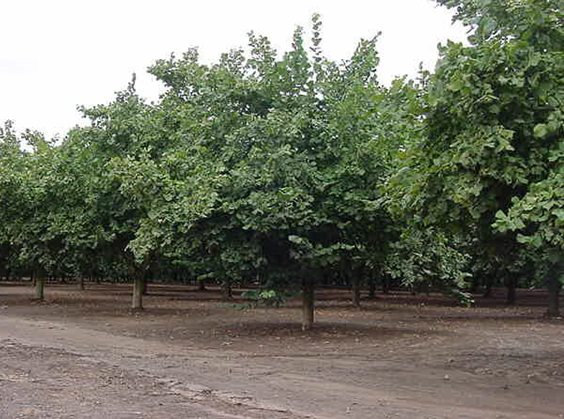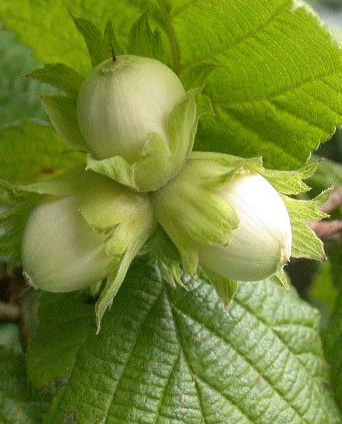Categories
Calendars
Guides
Reviews
Archive
Gallery
Articles
Ask Our Gardening Expert
Beginner's Corner >
Hazel |
The hazelnut or filbert is one of the easiest and most prolific of the nut trees. Related to the birch and native to the temperate Northern Hemisphere, they thrive in mild, humid conditions and when one sees how great a part of our hedgerow scene they take, we must have the ideal climate. It is a hardy tree growing to 5m by 4m, not for the small garden, tolerating a wide variety of soil types. |
As well as the nuts in autumn, attractive, pale yellow, male catkins are produced on bare branches in late winter. Larger varieties, known as filberts and cob nuts are also grown. The nut falls out of the husk when it ripens and is easily gathered from the ground. |
 |
Hazel trees in an orchard setting |
How to grow Hazelnuts |
| Hazelnut trees are shallow rooted and drought sensitive and will benefit from a good mulch each year. They are also easily damaged in high winds, so need protection. They are wind pollinated and, if grown for fruit, another tree as pollinator is needed. The female flowers appear as small tufts lower down on the tree and may mature at a different time from the male flowers of the same tree. |
 |
Nuts fall from their husks in autumn and can be picked from the ground |
Train each tree to six main branches and prune in autumn, removing shoots not less than two years old and shortening the previous year’s growth by about a third. Nuts are borne after three or four years and it may take some years more to produce a heavy crop. |
Propagation |
Plants can be grown from seed bit it takes a long time. Hazel grows from runners and the new plants can be easily separated from the parent. Mounding the stools to encourage the stems to produce rooted shoots is also successful. |
HAZEL AT A GLANCE |